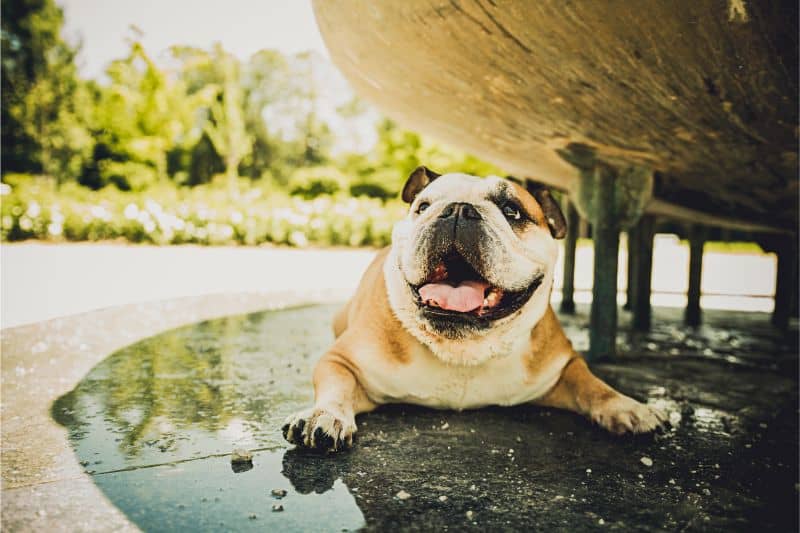Do Pets Sweat? How to Help Your Pet Stay Cool

Most of us probably don’t think about our pets sweating. After all, how would we know with all that fur? Pets don’t have any of the tell tale signs of sweat, and they don’t have a body odor. But how do our pets keep cool? Do pets sweat?
Keep reading to find out how our pets’ bodies are designed to keep cool in hot weather.
Do Pets Sweat?
The human skin is covered with sweat glands that allow our bodies to perspire and release heat from the body. Pet skin is covered with fur, and animals don’t have nearly as many sweat glands as we do. They do have some, however, which are mainly located on the surface of their paw pads. You may notice sweaty footprints on your patio in hot weather – evidence that pets do sweat.
Keeping Cool
Sweating from paw pads would not be enough on its own to keep dogs and cats cool. Instead, they have other methods of dissipating heat from their bodies.
Panting is the main way that dogs cool off. Panting releases moisture from the lungs and mouth, acting as an evaporative cooler. Dogs also have blood vessels close to the surface of the skin in their ears and faces. Diverting blood flow to these areas for cooling also helps cool off the body.
Cats mainly cool off by seeking shade and rest. In hot weather, you will seldom see a cat exert itself. Cats also sweat from paw pads, and may cool themselves with grooming, another form of evaporative cooling.
Cats can pant to regulate body temperature as well, but this may signal that your cat is heat stressed and/or getting close to heat stroke. If you’re unsure, always contact your veterinarian.
Avoiding Heat Stress
Because our furry friends have a more difficult time staying cool than we do, it’s important to be proactive. Know the signs of heat related illness, and that heat stroke is a medical emergency that requires immediate veterinary attention. Watch for:
- Sluggishness
- Seeking shade
- Lethargy
- Weakness
- Red gums and tongue
- Excessive panting
- Drooling
- Collapse
- Seizure
There are some things you can do when temperatures climb to help your pets stay cool and safe.
- Keep them indoors in an air conditioned environment (even when humans are not home).
- Always leave fresh, cool water in several places around your home, and bring fresh water for pets when taking a trip in the car or out walking.
- Dogs often enjoy a kiddie pool to lie in, sprinklers, or being “misted” with a gentle sprayer.
- Try a wet-down coat! This well-known technique in the show-dog circuit involves wrapping your dog in a water-absorbent fabric (such as synthetic chamois or even a towel) that has been wet down. It may take a try or two, but most pets will learn to love it.
- Outdoor cats should be brought inside during hot weather. Even a laundry room or mudroom can provide some relief. If that’s not possible, always provide shade and plenty of water outside.
- Pay close attention to pets who are at risk for heat stress, including brachycephalic breeds, puppies and kittens, older pets, obese pets, and those pets who are sick or injured.
Have a safe and wonderful rest of your summer with your pets, and please give Beverly Hills Veterinary Associates a call with any questions or concerns.
